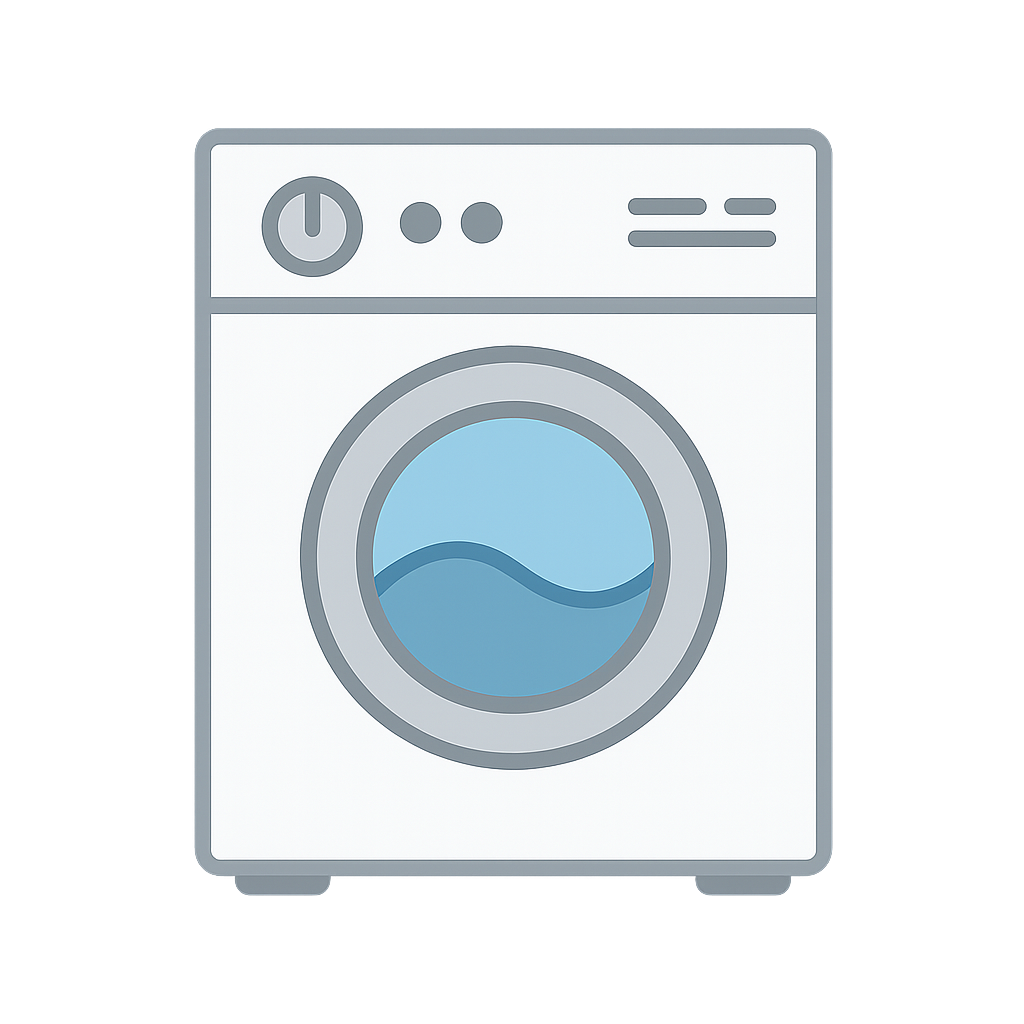The Washing Machine's Tale: A Spin Through History
Hello there. You might not recognize me without a pile of socks inside, but I'm the friendly washing machine. Before I was a gleam in an inventor's eye, your world was a very different, and much soggier, place. Imagine a day of the week called 'Wash Day.' It wasn't just an hour-long chore; it was an exhausting, all-day marathon of labor. The day began with hauling colossal buckets of water from a well or pump, a task that made arms ache and backs strain. This water then had to be heated in a giant kettle over an open fire, a hot and smoky process. Once the water was ready, the real work began. Clothes were plunged into the steaming tub and scrubbed relentlessly against a grooved, unforgiving washboard. Knuckles would become red and raw, and the sheer physical effort was immense. After scrubbing, each item had to be wrung out by hand, a twisting, squeezing motion that took incredible strength. Can you picture it? The steam, the sore muscles, the endless piles of wet, heavy fabric. From my place in the world of ideas, I watched this grueling ritual and dreamed of a way to help, a way to lift that heavy burden and give people back their day.
My family tree is a long and winding one, filled with brilliant minds who helped me become who I am today. My story begins not with a plug and a button, but with wood and a handle. My earliest ancestor was born in Germany in 1767, created by a thoughtful man named Jacob Christian Schäffer. He designed a wooden tub with a crank that could stir the clothes. It was a humble beginning, but it was the first spark of an incredible idea: a machine could do the scrubbing. Over the next century, my American cousins joined the family. In 1851, an inventor named James King patented a machine that used a drum, and in 1858, Hamilton Smith created a clever rotary version. You could turn a crank, and inside, paddles would swish the clothes through the soapy water. This was a significant improvement over the washboard, but it still required a person to stand there, turning and turning that handle. It was progress, but the true revolution was yet to come. The real game-changer, the thing that gave me my superpower, was electricity. In 1908, a visionary named Alva J. Fisher had an electrifying idea. He took one of my metal drum cousins and attached an electric motor to it. He called me 'Thor,' and I was mighty indeed! For the first time, I didn't need a person to power me. With the flip of a switch, I could churn, tumble, and spin all on my own. My motor was my heart, and it tirelessly washed the clothes, freeing people from the crank and the washboard forever. I had finally graduated from a simple tool into a true, automated machine, ready to change the world.
My greatest achievement isn't just making clothes bright and clean; it's the most precious gift I could ever give to families: time. Think about all those hours spent on Wash Day, chained to the tub and the washboard. I gave those hours back. Suddenly, people had the freedom to do other things. They could spend more time with their children, read a book, or learn a new skill. Many women were able to pursue education or get jobs outside the home, which fundamentally changed society. I helped unlock human potential by taking over one of the most time-consuming domestic chores. And I haven't stopped growing up since my 'Thor' days. Over the decades, I've become much smarter and more sophisticated. I learned to change cycles automatically, to rinse and spin without any help. I became more efficient, learning how to wash clothes beautifully with less water and energy. Now, some of my youngest relatives can even connect to the internet, allowing you to start a load of laundry from your phone. My journey from a wooden tub to a smart appliance has been long, but my purpose has always remained the same. I am proud to stand in your home, ready to take a load off your shoulders and make your life just a little bit easier, one spin cycle at a time.
Reading Comprehension Questions
Click to see answer
